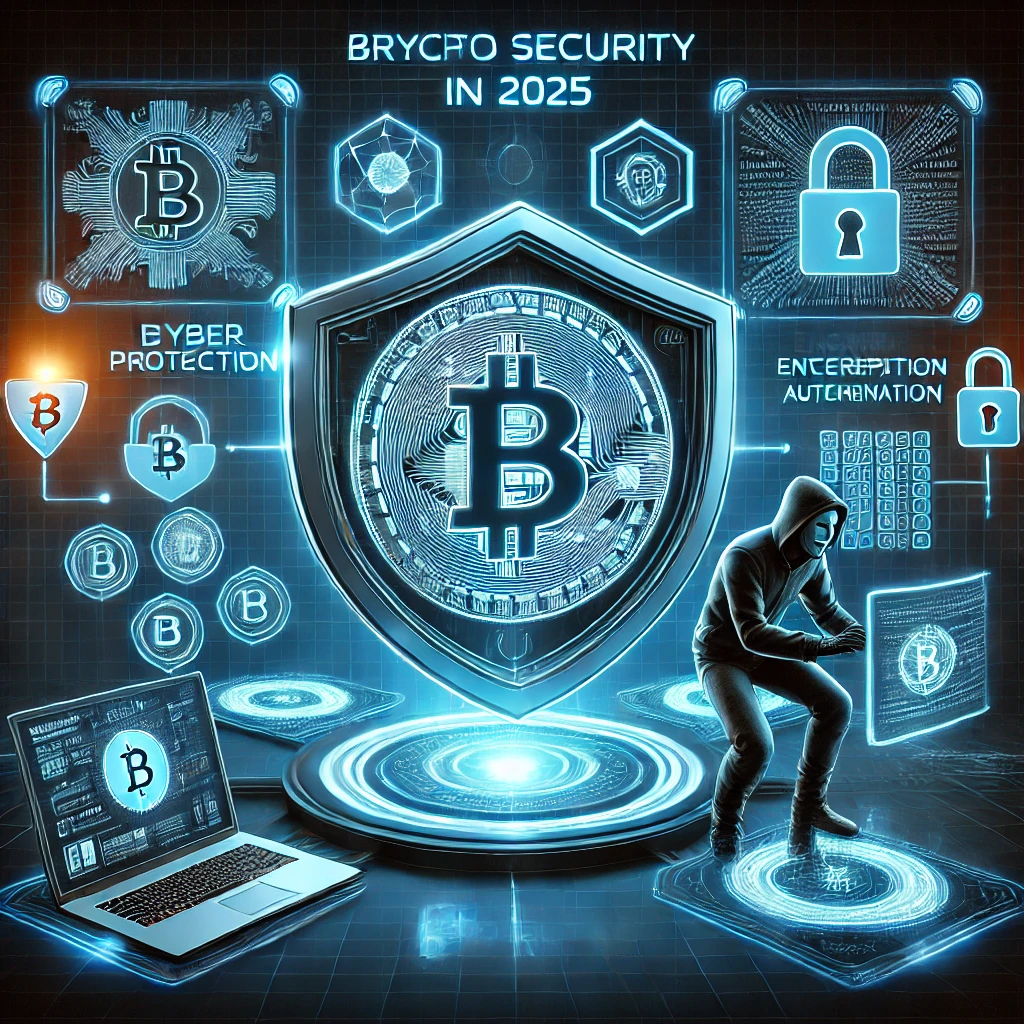Introduction
Crypto presents an opportunity for financial independence, but independence brings with it a certain level of responsibility. Each time we defeat one of these threats, cybercriminals create advanced systems and techniques to unravel our weaknesses. If you’re new to crypto, one of the most important aspects you’re faced with is how to safeguard your digital assets. In this ultimate guide we’ll go over 2025’s top 10 security tips, so you can keep your investments secure and avoid hacks, scams, and losses.
1. Use a Hardware Wallet
Why It’s Important
A hardware wallet is one of the most secure places to store your crypto. Hardware wallets also keep your private keys offline, unlike hot wallets that are online connected and therefore more likely to be hacked.
Recommended Hardware Wallets
- Ledger Nano X – Bluetooth-enabled for easy use
- Trezor Model T – Touchscreen with high security features
- Ellipal Titan – for the highest level of protection, using an air-gapped cold wallet
2. Enable Two-Factor Authentication (2FA)
How It Protects You
Two-Factor Authentication (2FA) is a security measure that adds an additional layer of authentication and provides you with a verification step (i.e., you have to check a code in an authentication app, etc.) to log in to your applications..
Best 2FA Apps
- Google Authenticator
- Authy (allows backup and multi-device support)
- Microsoft Authenticator

3. Beware of Phishing Scams
How to Identify Phishing Attacks
In addition to making it easier to launch fishing attacks, which are scams designed to make users disclose sensitive data, pretending to be legitimate services.
Red Flags to Watch For:
- Emails or messages that includes some form of urgent security alert
- Fishy links that resembles to real exchange URLs but with slightly misspells
- Unexpected requests for personal or login details
How to Protect Yourself:
- Always verify URLs before entering credentials
- Use browser extensions like MetaMask’s phishing detector
- Never click on links from unknown emails or messages
4. Keep Software and Firmware Updated
Why Updates Matter
Outdated software often contains security vulnerabilities. Regular updates patch these flaws and keep your system secure.
What to Update Regularly
- Wallet software (both mobile and desktop apps)
- Exchange security settings
- Antivirus and anti-malware software
5. Use a Strong, Unique Password
Creating an Unbreakable Password
Do not use simple passwords such as “123456” or “password”. Instead use a long, random and unique password for each crypto account..
Tips for a Strong Password:
- At least 12-16 characters long
- Includes uppercase, lowercase, numbers, and symbols
- Use a password manager like Bitwarden or LastPass
6. Store Backup Keys Securely
Why Backups Are Essential
Seed phrases also known as recovery keys is the only way to recover your funds in the event that you lose access to your wallet. If you lose your seed phrase, you lose your crypto forever!
Safe Storage Options
- Write it down and store it in a secure location (safe, lockbox, etc.)
- Avoid saving it digitally (no screenshots, cloud storage, or notes apps)
- Consider metal backup solutions (e.g., Cryptosteel or Billfodl)
7. Avoid Using Public Wi-Fi for Crypto Transactions
The Dangers of Public Networks
Public Wi-Fi is vulnerable to man-in-the-middle attacks, where hackers intercept data.
How to Stay Safe:
- Use a VPN (Virtual Private Network) when accessing crypto accounts
- Stick to trusted, secure networks
8. Verify Smart Contracts Before Transacting
Why Smart Contracts Can Be Risky
Malicious smart contracts can drain your wallet without your permission.
How to Verify Contracts:
- Use tools like Etherscan or BSCScan to inspect contract addresses
- Double-check links and verify projects through official websites and social media
9. Withdraw from Exchanges When Not Trading
Why Keeping Crypto on Exchanges is Risky
Exchanges are frequent targets for hackers. If your funds remain on an exchange, they could be at risk in case of a security breach.
Best Practices:
- Only keep funds on exchanges when actively trading
- Transfer long-term holdings to a cold wallet
10. Use Multi-Signature (Multi-Sig) Wallets
How Multi-Sig Enhances Security
Multi-signature wallets require multiple approvals before a transaction is processed, making unauthorized access difficult.
Top Multi-Sig Wallets:
- Gnosis Safe
- Electrum (for Bitcoin)
- Casa Wallet
Conclusion
There’s a wealth of opportunity in the crypto world, but security needs to be your number one priority. Keeping that in mind, read on as we present to you the top 10 security measures to follow and avoid risks while securing your digital assets in 2025 and beyond. Keep your eyes peeled, educate yourself, and don’t give your private keys to anyone! For more details about technical analysis you can visit https://nifty50trends.com/
FAQs
1. What is the safest way to store cryptocurrency?
Hardware wallets + private keys offline is the most secure way.
2. Is keeping crypto on an exchange safe?
No. Exchanges can be hacked. Withdraw funds to a secure wallet if you are not trading.
3. What should I do if I fall victim to a scam?
- Report the incident to crypto scam reporting platforms (e.g., Chainabuse)
- Contact the exchange’s support team if funds were compromised there
- Spread awareness in crypto communities to prevent further victims
4. How often should I update my wallet and security settings?
You should update your wallet software and security settings whenever such updates are made available, and this should be done every week or two at most.
5. Can I recover my crypto if I lose my private key?
No. Without it, if you lose your private key or seed phrase, you cannot recover your crypto. Never keep backups without proper security.

